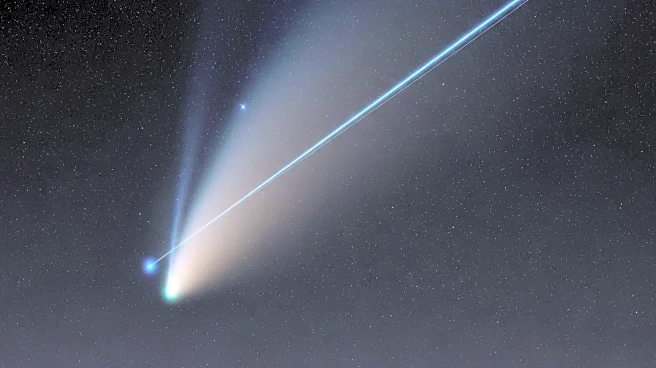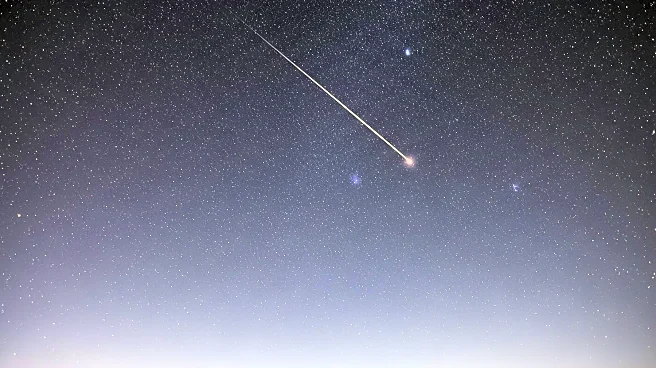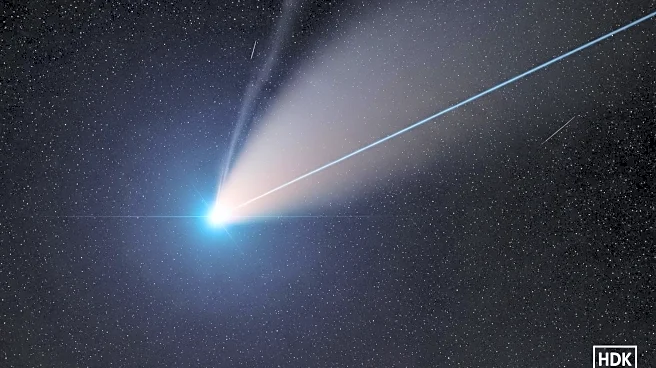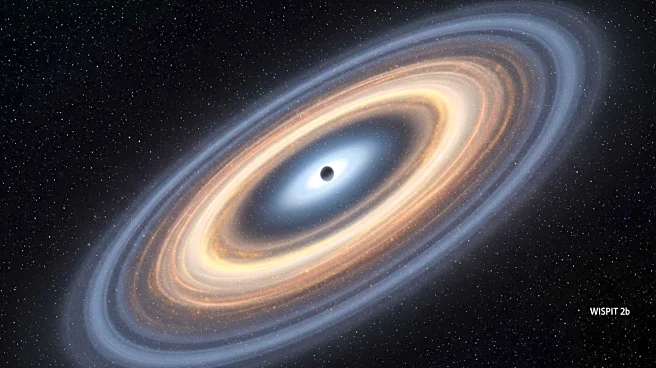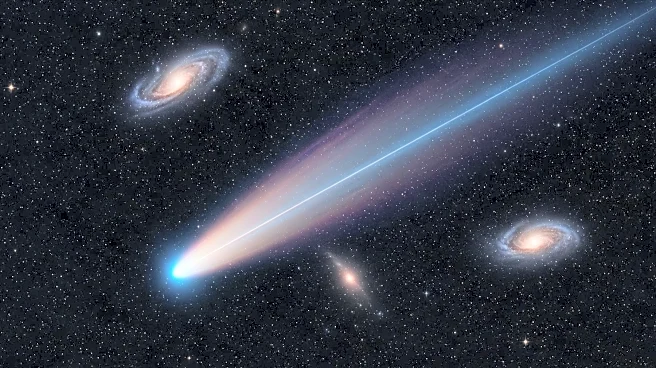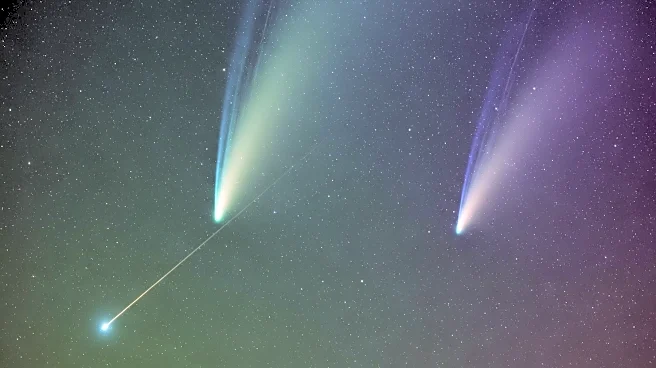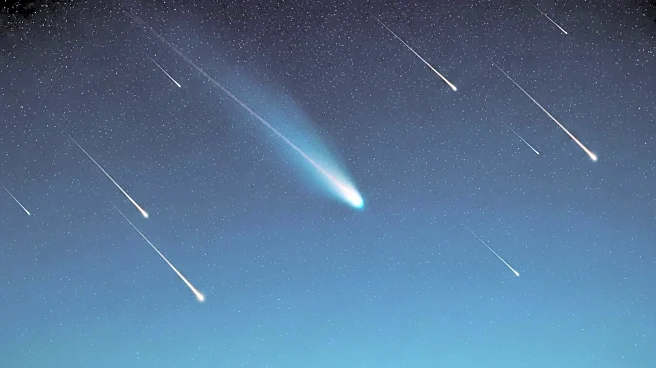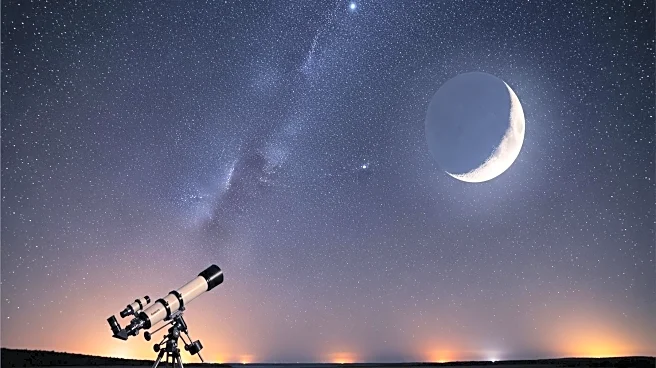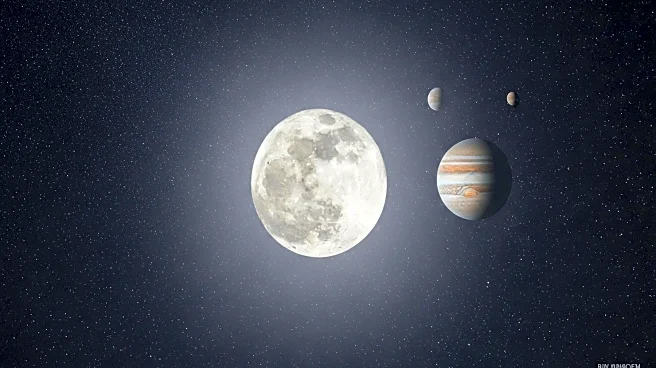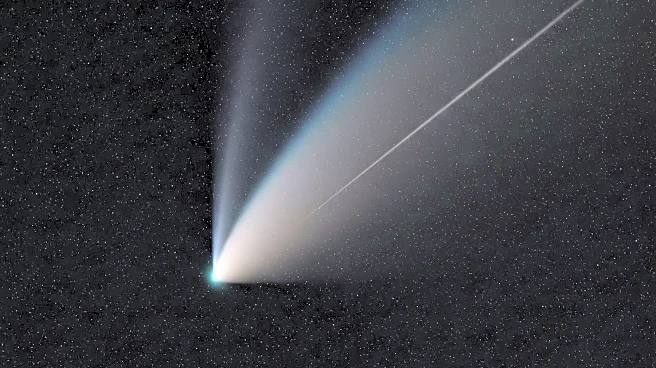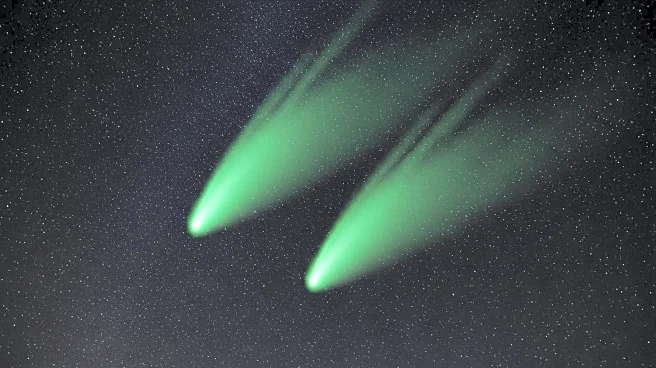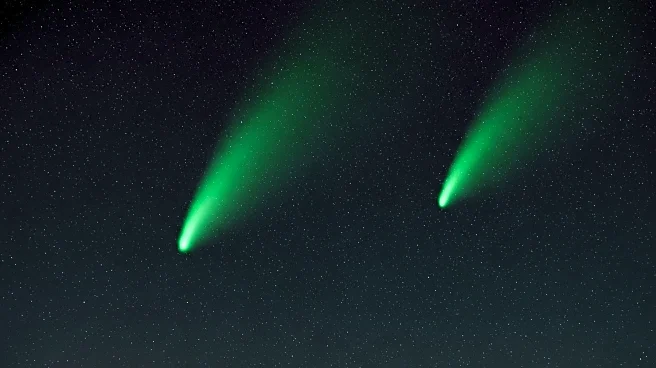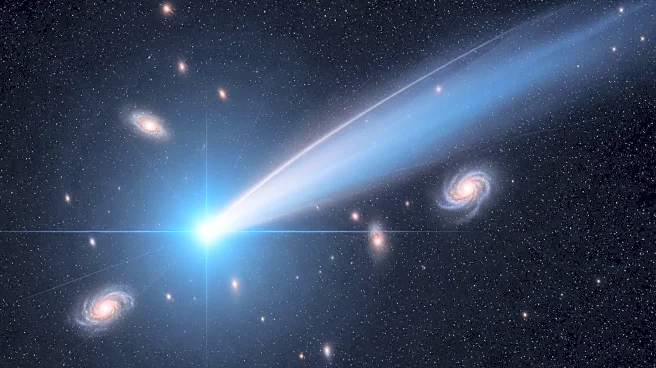What is the story about?
What's Happening?
Comet Lemmon (C/2025 A6) is anticipated to become visible in the night sky later this month, providing a rare opportunity for skywatchers to observe a bright comet without the need for telescopes or binoculars. The comet was first discovered in January 2025 by the Mount Lemmon Survey in Arizona. It is expected to reach its peak brightness on October 21, coinciding with a new moon, which will create optimal viewing conditions due to the darker skies. Comet Lemmon's strong luminosity and active tail make it a standout celestial event, with its closest approach to Earth being approximately 56 million miles away.
Why It's Important?
The appearance of Comet Lemmon is significant for astronomers and enthusiasts alike, as it offers a rare chance to observe a bright comet with the naked eye. Such events are infrequent, with only a few comets each year achieving the necessary brightness for unaided viewing. The comet's bright tail has allowed astronomers to map its path with clarity, providing insights into its orbital dynamics. This event highlights the ongoing interest and excitement in astronomical phenomena, contributing to public engagement with science and the natural world.
What's Next?
As Comet Lemmon continues its journey, it will shift from being visible in the early morning skies to the evenings, making it accessible to a wider audience. Observers in the Northern Hemisphere will find it easier to track as it moves past the Gemini constellation into Ursa Major. While comet brightness can be unpredictable, experts remain optimistic about a spectacular display. The comet's orbital period is expected to shorten after its close approach to the Sun in November, altering its trajectory for future observations.
Beyond the Headlines
The appearance of Comet Lemmon underscores the dynamic nature of our solar system and the importance of ongoing astronomical research. Such events can inspire interest in space exploration and science education, fostering a deeper understanding of cosmic phenomena. The comet's visibility without advanced equipment democratizes access to astronomical experiences, allowing a broader audience to engage with the wonders of the universe.
AI Generated Content
Do you find this article useful?
